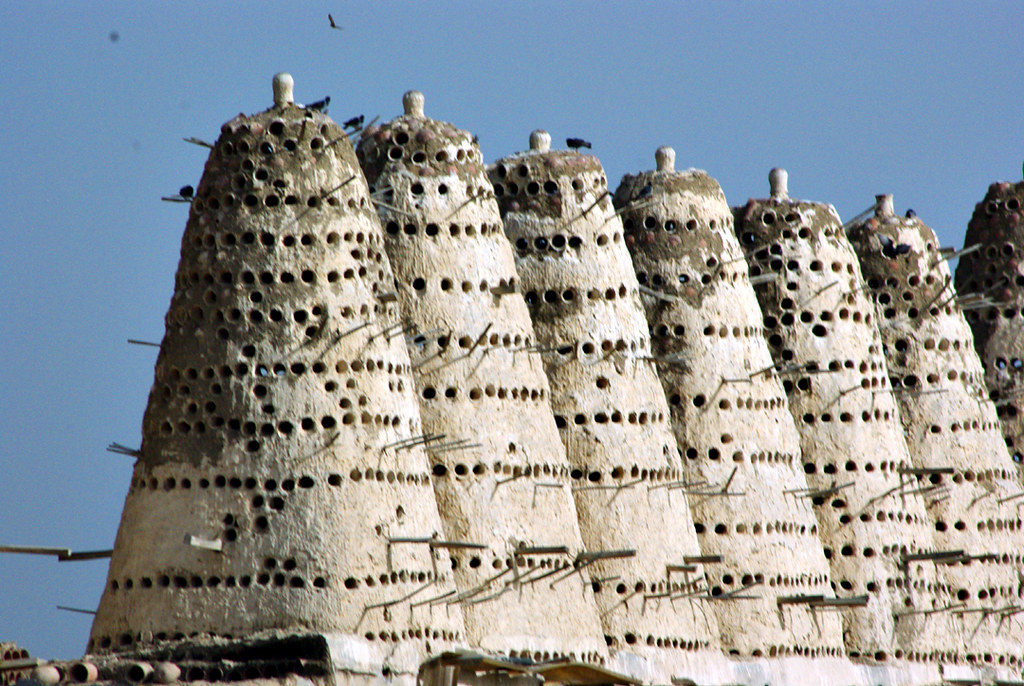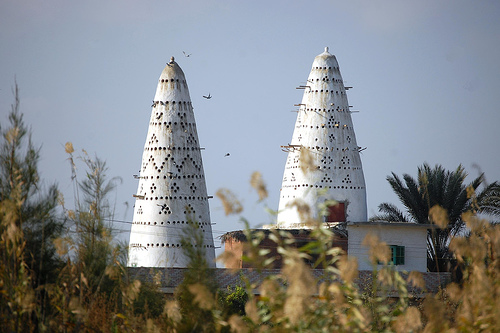
Clay needles the horizon of many rural villages; unassuming structures, polka-dotted with nooks and nests and the song of Egyptian Swift pigeons. Otherwise known as dovecotes or pigeon houses, these “earthen chimneys” are one of Egypt’s signature sights, looming higher than the squat, red-brick buildings in their periphery.
Used as a means for both farming and raising pigeons, dovecotes have featured in local history as far back as ancient Egypt. Between the need for manure for grain farming, and the staple addition of pigeon to the Egyptian diet, locales such as Mit Ghamer, and Roman-remains of Karanis have featured them in prolific numbers.


Constructed from mud-brick, dovecotes are artificial formations that emulate mountainous topographies. On occasion, they are built sitting on the upper stories of houses, though the vast majority is a stand-alone, tower-like variety that varies in size, color, and type. Designed to allow air through, the spacious interior allows birds to fly through and nest comfortably.
Over the centuries, they have become integral to Egyptian urban planning, particularly given the scarce nature of arable land.


Although infamous as pests in other countries, Egyptians have a lingering fondness for pigeons; they are useful and resourceful creatures in local lore. Pigeons are allowed to linger on farmlands, seen as a “special voice” of wisdom and family structure. They are taught to recognize dovecotes as their home through regular feeding and friendly interaction, where they are socialized to more domesticated forms of living.
Egyptian cuisine, colorful as it is, reserves a special place for the inclusion of pigeons. Most famously is hamam mahshi, a stuffed-pigeon dish where the birds are filled with rice or freekeh, onions, and chopped giblets. Spiced with cinnamon, cumin, pepper, and nuts, they are then roasted and served whole. Because of its prolific addition to the Egyptian diet, a local economy has formed around pigeons – within urban and rural communities alike.
The dovecotes, nonetheless, remain a sight to behold, and during arid sunsets, these humble creatures can be seen soaring in unison, down the Nile, and into their homes.
Their dovecotes.






Comments (3)
[…] Dovecotes: A Signature of the Egyptian Landscape […]
[…] Dovecotes: A Signature of the Egyptian Landscape […]